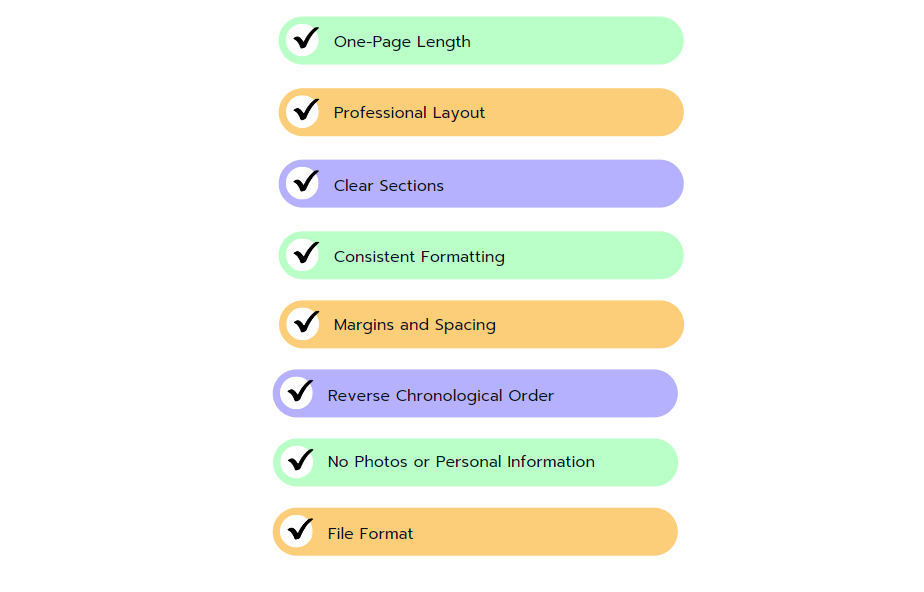
The Ultimate Guide to Crafting an Investment Banking Resume 2024
So, you're aiming for a career in investment banking? Great choice! Investment banking does not only provide great opportunities for career growth and financial success, but is also a very challenging and dynamic field to work in. But first things first, you need to get your foot in the door, and that means acing your resume. Your investment banking resume is your golden ticket to landing that dream job or internship. Let’s take a closer look at how to make your resume shine among the stacks on a recruiter’s desk.
Table of Contents
- The Right Format for an Investment Banking Resume
- Structure: Building a Solid Foundation for Your CV
- Contact Information
- Education
- Experience
- Skills, Activities and Interests
- Important Points to Keep in Mind When Crafting Your Investment Banking Resume
- The Do's and Don'ts of an Investment Banking Resume
- Bonus Tips to Stand Out as a Candidate in Investment Banking
- Final Thoughts on Crafting Your Investment Banking Resume
The Right Format for an Investment Banking Resume
The format of your investment banking resume is the first impression you are going to make, so be sure it is a good one. Recruiters in the field appreciate clarity, professionalism, and attention to detail. Here's how to format your resume to meet these expectations:

One-Page Length: Keep your resume concise and limited to one page. Investment banking recruiters often scan through many resumes, so keeping it short and to the point is key.
Professional Layout: Use a clean, simple, and professional layout. Avoid flashy designs or graphics that can distract from the content. Stick to traditional fonts like Arial, Times New Roman, or Calibri, and maintain a font size between 10 and 12 points.
Clear Sections: Divide your resume into clear, distinct sections with headings such as Contact Information, Summary or Objective, Education, Experience, Skills, Certifications, and Interests. Use bold or slightly larger font for section headings to enhance readability.
Consistent Formatting: Ensure consistency in formatting throughout the resume. Align dates, job titles, and company names consistently, and use the same style for bullet points, font sizes, and spacing.
Margins and Spacing: Use standard margins (1 inch on all sides) and adequate spacing between sections to ensure your resume doesn’t look cluttered. White space is important for readability.
Reverse Chronological Order: List your experiences and education in reverse chronological order, starting with the most recent. This helps recruiters see your most recent and relevant experiences first.
No Photos or Personal Information: Avoid including photos, date of birth, or other personal information that is not relevant to your qualifications for the job.
File Format: When submitting your resume, use a PDF format to ensure the formatting remains consistent across different devices and software.
Structure: Building a Solid Foundation for Your CV
A well-structured resume is essential. As we have learned already, investment banking recruiters look for clarity and organization, so let's break down, which information should be placed in your resume:
- Contact Information
- Summary or Objective (optional)
- Education
- Experience
- Skills, Activities, and Interests
Contact Information
This should be at the very top of your CV and easy to locate. Include:
- Your full name
- Phone number
- Professional email address
- LinkedIn profile (ensure it’s updated and matches your resume)
- Location (City and State is enough)
Summary or Objective (Optional)
A brief summary or objective can be a good introduction, especially for fresh graduates. However, it's optional and should be tailored to the job you’re applying for. Keep it concise – two to three sentences focusing on your career goals and what you bring to the table.
Education
For students and recent graduates, education is key. Include:
- University name
- Degree and major
- Graduation date (or expected date)
- GPA (if it’s impressive)
- Relevant coursework or honors
Example:
University of Business Excellence
Bachelor of Science in Finance, May 2024
GPA: 3.8/4.0
Relevant Coursework: Corporate Finance, Financial Modeling, Investment Analysis
Experience
This section is the meat of your resume. It showcases your practical skills and achievements. Focus on:
- Job title
- Company name
- Dates of employment (month/year)
- Bullet points detailing your responsibilities and accomplishments
Using bullet points to list your responsibilities and achievements makes your resume easier to read and allows recruiters to quickly identify key information. However, these bullets should not be formulated without care. Make sure to really showcase your achievements and make a strong impression.
Start by using powerful action verbs like "analyzed," "led," "developed," and "executed" to clearly define your role and contributions. Always aim to quantify your accomplishments with specific numbers and percentages. For example, instead of saying "worked on financial models," you could say "developed financial models for M&A transactions worth over $500 million." This not only highlights your analytical skills but also demonstrates the scale of your work.
Focus on the impact of your actions—did you streamline a process, increase revenue, or secure client buy-in for major projects? Including these details turns generic job duties into impressive achievements that capture a recruiter’s attention and demonstrate your value to potential employers. Additionally, tailor each bullet to align with the specific skills and experiences that the job description emphasizes, ensuring your resume is highly relevant to the investment banking role you’re targeting.
Example:
Summer Analyst, Global Bank Inc.
May 2023 – August 2023
- Conducted financial analysis and modeling for M&A transactions, directly contributing to deals valued over $500 million.
- Played a key role in preparing pitch books and presentation materials that successfully secured client buy-in for major projects.
- Collaborated with senior analysts to evaluate investment opportunities, leading to a 15% increase in client engagements and securing new business partnerships.
Skills, Activities and Interests
The Skills, Activities, and Interests section of your investment banking resume is your opportunity to showcase unique abilities and personal interests that can make you stand out as a well-rounded candidate.
For skills, focus on both hard and soft skills essential for investment banking.
Hard skills should be tailored to the investment banking industry. Highlight technical skills like financial modeling, advanced Excel, PowerPoint, Bloomberg, and market analysis. Certifications like CFA Level 1 can also be a significant plus.
Soft skills should demonstrate your ability to work in a high-pressure environment. These can include aspects like attention to detail, communication, teamwork, and time management.
Activities can include leadership roles in finance clubs, participation in relevant competitions, or involvement in significant projects that show initiative and engagement with the field.
Interests, while optional, can add a personal touch if they’re unique or relevant to the job. For example, interests in economic research, investment strategies, or even high-stakes team sports can illustrate your analytical mindset and team-oriented approach. This section helps paint a fuller picture of you as a candidate, beyond just your academic and professional achievements, making you more memorable to recruiters.
Looking for a head start? Our CV templates ensure you cover all the essentials, helping you create a polished and professional application in no time!





